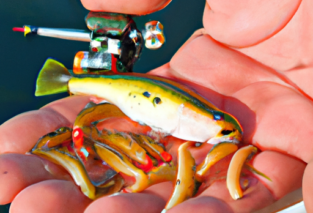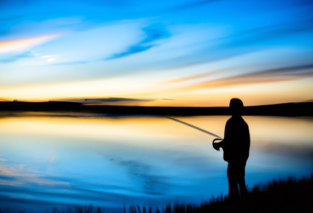Are you a new angler looking to explore the exciting and rewarding world of fishing? If so, it is essential to understand the importance of fishing responsibly and the environmental considerations that come with it. In our comprehensive guide, “How To Fish Responsibly: Environmental Considerations For New Anglers,” we provide you with valuable insights and tips on how to minimize your impact on the environment while still enjoying your fishing adventures. From choosing sustainable fishing practices to understanding catch and release techniques, this guide is your go-to resource for becoming an environmentally-conscious angler.

Choosing the Right Fishing Gear
When it comes to fishing, using the right gear is crucial not just for your success as an angler, but also for the well-being of the environment. Researching and selecting eco-friendly tackle is an important step in minimizing your impact on aquatic ecosystems.
Researching and Selecting Eco-friendly Tackle
Before purchasing any fishing gear, take the time to research eco-friendly options. Some companies prioritize sustainability by using materials that have a lower impact on the environment. Look for products that are made from recycled materials or those that use sustainable manufacturing practices. Additionally, seek out fishing tackle that is free from harmful substances such as lead or other toxic materials.
Avoiding Lead Sinkers and Lures
One of the ways to ensure your fishing gear is environmentally friendly is by avoiding the use of lead sinkers and lures. Lead is a highly toxic substance that poses a significant threat to wildlife and their habitats. When swallowed by fish or other aquatic creatures, lead can cause severe health issues and even death. Instead, opt for non-toxic alternatives such as tungsten or bismuth, which are just as effective but have a much lower impact on the environment.
Using Circle Hooks to Reduce the Risk of Deep Hooking
Deep hooking is a common problem in angling, and it can lead to serious injury or mortality in fish. To minimize this risk, consider using circle hooks. Unlike traditional J-hooks, circle hooks are designed to hook fish in the corner of their mouth, making it easier to safely release them. By using circle hooks, you can effectively reduce the number of instances of deep hooking and increase the survival rate of released fish.
Understanding Catch and Release
Catch and release fishing is an essential practice for the conservation of fish populations. However, it is crucial to have a thorough understanding of the regulations and limits in place to ensure you are releasing fish properly and responsibly.
Knowing the Regulations and Limits
Before hitting the water, familiarize yourself with the fishing regulations and limits in your area. Each region may have specific rules regarding species, size limits, bag limits, and catch-and-release guidelines. By knowing and abiding by these regulations, you are not only acting responsibly but also contributing to the sustainability of fish populations for future generations.
Handling Fish with Care
When practicing catch and release, it is essential to handle fish with the utmost care. Avoid touching their gills, as it can cause damage and impair their ability to breathe. Wet your hands before handling the fish to minimize the removal of their protective slime coating. If you need to remove the fish from the water, do so gently and quickly, minimizing their time out of their natural environment.
Using Proper Release Techniques
To maximize the chances of survival after release, it is vital to use proper release techniques. Hold the fish upright in the water, ensuring their gills receive an adequate flow of oxygen-rich water. Allow the fish to swim out of your hands when they are ready. If the fish is struggling to swim upright, gently move them back and forth to help oxygenate their gills until they regain their strength. Remember, the goal is to release the fish in a healthy condition, increasing their chance of survival.
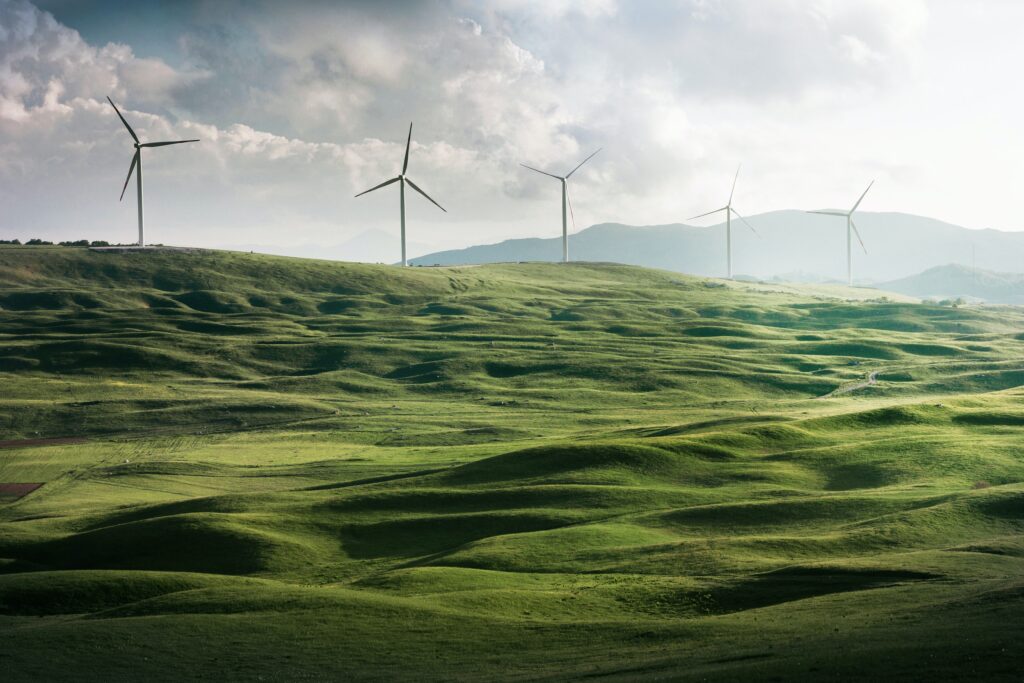
Preventing the Spread of Aquatic Invasive Species
Aquatic invasive species pose a significant threat to native ecosystems and can wreak havoc on fish populations. It is crucial to take preventative measures to avoid inadvertently spreading these species to new areas.
Inspecting and Cleaning your Gear
Before and after each fishing trip, take the time to inspect and clean your gear thoroughly. Check for any visible signs of invasive species such as zebra mussels or Eurasian watermilfoil. If you spot any, remove them carefully and dispose of them properly. Additionally, make sure to clean your gear with hot water or a mild bleach solution to eliminate any potential microscopic hitchhikers.
Draining Water from Boats and Equipment
Another way to prevent the spread of aquatic invasive species is by draining water from your boats, livewells, and other fishing equipment. Many invasive species, such as Asian carp, can hitch a ride in standing water. By draining all water before leaving a body of water, you can help stop these species from infiltrating new habitats.
Report any New Species Sightings
If you come across a species that you suspect may be invasive or not native to the area, report it to the appropriate authorities. Timely reporting can help researchers and conservation agencies track the spread of these species and implement mitigation efforts more effectively. Your contribution can make a significant difference in preserving the integrity of our aquatic ecosystems.
Conserving Fish Habitats
Conserving fish habitats is crucial for maintaining healthy fish populations and fostering a thriving ecosystem. Understanding the local ecosystems and implementing sustainable practices is essential for the long-term health of these habitats.
Learning About Local Ecosystems
Take the time to educate yourself about the local habitats and ecosystems where you fish. Research the types of fish species that reside in the area and the characteristics of their preferred habitats. By developing a deeper understanding of these ecosystems, you can make informed decisions that protect and conserve these vital habitats.
Avoiding Sensitive Areas
Some areas may be particularly sensitive and vulnerable to damage caused by fishing activities. These can include spawning grounds, fragile ecosystems, or protected areas. When fishing, it is crucial to respect these sensitive areas and avoid fishing in them. By doing so, you contribute to the preservation of these crucial habitats and ensure their continued viability for fish populations.
Practicing Leave No Trace Principles
Implementing Leave No Trace principles is an excellent way to minimize your impact on fish habitats. These principles include practices such as properly disposing of trash, minimizing noise pollution, and refraining from altering the natural landscape. By adhering to these principles, you can engage in angling while preserving the natural beauty of fish habitats for future generations to enjoy.

Managing Fishing Waste
The responsible management of fishing waste is essential for preventing pollution and protecting wildlife. Proper disposal of fishing line and hooks, as well as minimizing plastic waste, is key to maintaining the health of aquatic environments.
Proper Disposal of Fishing Line and Hooks
Improperly discarded fishing line and hooks can pose a severe threat to wildlife. Birds, fish, and other animals can become entangled in discarded line, leading to injury or death. Always dispose of fishing line in designated bins or recycling programs specifically designed for fishing line. Additionally, remove any hooks from the line and dispose of them safely to prevent accidental ingestion by wildlife.
Minimizing Plastic Waste
Plastic waste is a growing concern, and its impact on aquatic environments cannot be understated. Minimize your use of single-use plastic items such as water bottles, food wrappers, and plastic bags while fishing. Instead, opt for reusable alternatives and pack your supplies in eco-friendly containers. By reducing your plastic waste, you are helping to protect fish habitats and prevent plastic pollution in our waters.
Participating in Community Clean-up Events
An excellent way to actively contribute to the management of fishing waste is by participating in community clean-up events. These events provide an opportunity to join forces with other anglers and conservation-minded individuals to remove trash and debris from fishing spots and waterways. By dedicating some of your time to these events, you can make a tangible difference in the health and cleanliness of the environment.
Protecting Endangered and Threatened Species
Endangered and threatened species are facing severe population declines, and their protection is of utmost importance. As an angler, it is essential to be aware of these species and take measures to avoid negatively impacting their already fragile populations.
Knowing the Protected Species in your Area
Familiarize yourself with the endangered and threatened species in your fishing area. Understanding which species are in decline will allow you to take extra precautions to avoid interactions with them. By recognizing and respecting their protected status, you can contribute to the preservation of these species and their habitats.
Avoiding Fishing in Designated Protected Areas
Protected areas are designated to safeguard important habitats and vulnerable species. As an angler, it is crucial to respect these designations and avoid fishing in these protected areas. By fishing elsewhere, you can still enjoy the thrill of angling while minimizing your impact on these critical habitats.
Reporting any Encounters with Threatened Species
If you happen to encounter a threatened species while fishing, it is essential to report the encounter to the appropriate conservation agencies. These reports help researchers monitor the distribution and behavior of these species, which can assist in the development of conservation strategies. Your observation and reporting play a vital role in the protection and recovery of endangered and threatened species.
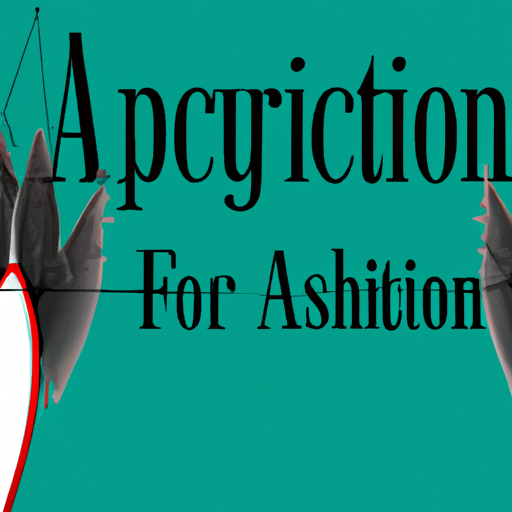
Understanding and Adhering to Fishing Regulations
Fishing regulations are put in place to ensure the sustainability of fish populations and protect sensitive ecosystems. It is your responsibility as an angler to understand and adhere to these regulations.
Obtaining the Appropriate Fishing Licenses
Before you cast your line, make sure you have the necessary fishing licenses and permits required by your local authorities. Fishing licenses fund conservation and research efforts, allowing for the sustainable management of fish populations and habitats. By purchasing the appropriate licenses, you are directly contributing to the preservation of our aquatic ecosystems.
Following Size and Bag Limits
Size and bag limits are restrictions that dictate the number and size of fish you are allowed to keep. These limits are necessary to prevent overfishing and promote population growth. Familiarize yourself with the specific size and bag limits for the species you are targeting and ensure you comply with them. Following these regulations helps maintain healthy fish populations for future generations of anglers to enjoy.
Understanding Closed Seasons and Areas
Closed seasons and areas are periods or locations when fishing is prohibited. These restrictions are typically in place during critical times for fish breeding, migration, or when sensitive habitats need protection. It is essential to understand and respect these closures to allow fish populations to flourish without disturbance. Compliance with closed seasons and areas demonstrates your commitment to sustainable angling practices and the preservation of fish populations.
Promoting Ethical Angling Practices
Angling is not just about catching fish; it is also about fostering a sense of community and respect for the environment. Promoting ethical angling practices ensures that fishing remains enjoyable and sustainable for both present and future generations.
Respecting Other Anglers and their Equipment
Angling is a shared pastime, and it is essential to treat other anglers with respect and courtesy. Avoid encroaching on someone else’s fishing space and maintain a respectful distance. If you accidentally cross paths with someone’s fishing line, communicate politely to avoid tangled lines. Respecting other anglers and their equipment fosters a positive angling community and enhances everyone’s fishing experience.
Avoiding Overfishing and Pushing Limits
While it can be tempting to keep catching fish, it is crucial to avoid overfishing. Overfishing can lead to the decline of fish populations and disrupt entire ecosystems. Act responsibly by adhering to size and bag limits, and consider practicing catch and release whenever possible. By not pushing the limits and giving fish populations a chance to recover, you actively contribute to sustainable angling practices.
Keeping Safety in Mind
Safety should always be a top priority when engaging in any outdoor activity, including fishing. Be aware of your surroundings, watch for potential hazards, and make sure you have the appropriate safety equipment such as life jackets when fishing from a boat. By prioritizing safety, you can enjoy your fishing experience while minimizing risks to yourself and others.
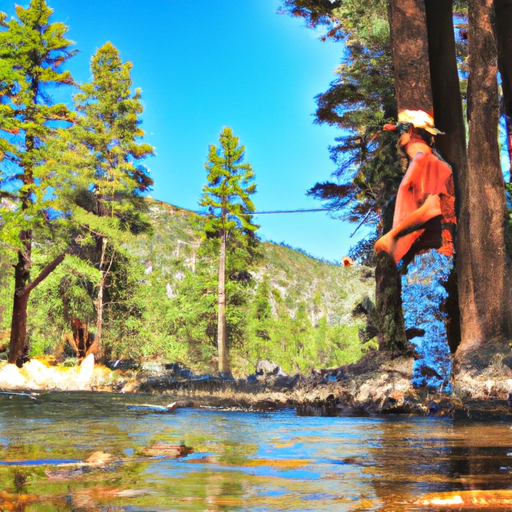
Incorporating Sustainable Bait and Lure Alternatives
Your choice of bait and lures can have a significant impact on the environment. By opting for sustainable alternatives, you can reduce your ecological footprint and contribute to the overall health of aquatic ecosystems.
Using Biodegradable and Renewable Baits
Traditional baits such as nightcrawlers or minnows have their environmental drawbacks. Consider using biodegradable and renewable baits such as worms or grubs. These options are not only effective but also minimize the use of resources and reduce the potential for introducing non-native species.
Exploring Artificial Lure Options
Artificial lures can be an excellent alternative to live bait. They are often reusable, reducing the amount of waste generated by discarded baits. Additionally, exploring artificial lure options allows you to mimic natural prey effectively, leading to increased angling success.
Supporting Sustainable Fishing Accessory Brands
When purchasing fishing accessories such as lures, hooks, or lines, opt for brands that prioritize sustainability. Look for companies that have eco-friendly initiatives, use recycled materials, or support conservation efforts. By supporting these brands, you align your fishing practices with your commitment to the environment.
Continuing Education and Staying Updated
As an angler, the pursuit of knowledge should be ongoing. Staying updated on fishing research, best practices, and conservation efforts is instrumental in refining your skills and staying informed about the latest environmental considerations.
Keeping Up with Fishing Research and Best Practices
Stay informed by keeping up with the latest fishing research and best practices. This information can help you improve your angling techniques while ensuring you are adopting the most environmentally responsible practices. Research studies, online publications, and fishing magazines are valuable resources to expand your knowledge and stay up-to-date.
Attending Workshops and Seminars
Consider attending workshops and seminars that focus on fishing, conservation, and environmental awareness. These events provide opportunities to learn from knowledgeable experts and interact with like-minded individuals. By participating in these activities, you can gain practical skills, insights, and a broader perspective on responsible angling.
Following Conservation Blogs and Websites
A great way to stay informed about environmental considerations for new anglers is by following conservation blogs and websites. These online platforms often provide updates on relevant topics, share success stories, and offer practical tips for responsible fishing. Subscribe to newsletters or follow social media accounts for regular updates that can enhance your angling practices.
By following these guidelines and adopting responsible fishing practices, you can enjoy the sport while minimizing your impact on the environment. As a responsible angler, you play a crucial role in the preservation and conservation of fish populations and their habitats. Remember, choosing the right fishing gear, understanding catch and release, preventing the spread of invasive species, conserving fish habitats, managing fishing waste, protecting endangered species, adhering to fishing regulations, promoting ethical angling practices, incorporating sustainable bait and lures, and staying informed are all vital steps towards fishing responsibly and ensuring the sustainability of our precious aquatic resources.




